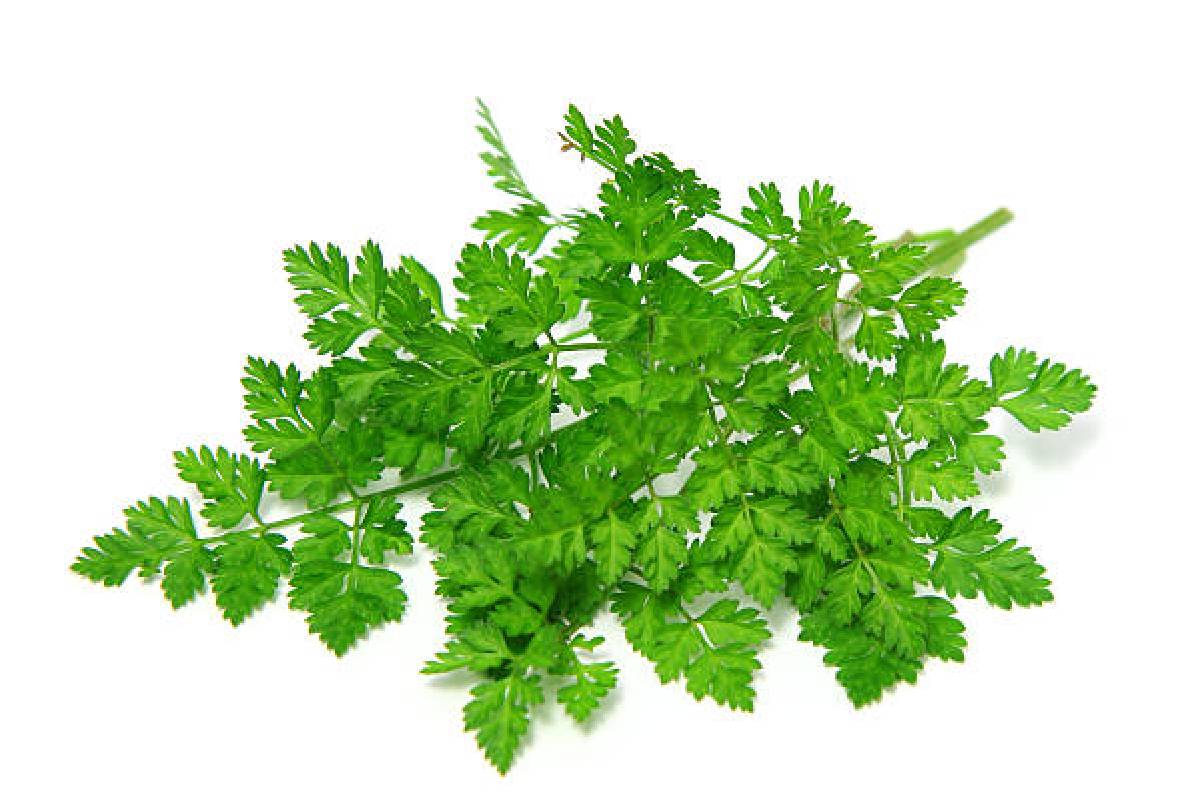French cuisine regularly uses the delicate culinary herb chervil, pronounced SHER-vil. It has a moderate flavor and is a member of the parsley family. Egg dishes frequently incorporate this springtime plant. It is also known as French parsley.
Taste And Flavour
Chervil tastes like a lovely blend of parsley and tarragon. Chervil has a moderate flavor with undertones of licorice or anise but not a pronounced anise or licorice flavor. Fresh parsley, tarragon, or a combination of the two would work well in place of chervil if a recipe called for it. For egg recipes, chives or dill can be used in place of chervil. However, they have different flavors.
Chervil’s Appearance
Chervil leaves are delicate and curly, resembling the greens of a carrot. Compared to flat-leaf parsley, they have frillier leaves and are a little paler. The leaves on some bunches are securely shut. It’s possible to find bunches with blossoms, but you should stay away from them because the herb will have become sour.
Uses Of Chervil
Chervil’s subtle flavor makes it ideal for foods like salads and soups, which won’t be overwhelmed by other flavors. Since the flavor won’t endure after more prolonged cooking, it is only added before serving. It enhances omelets well and is frequently used to create the traditional Béarnaise sauce.
The fines herbes mixture also contains chives, parsley, tarragon, and chervil. French cuisine uses this mixture in salads, poultry, and egg dishes.
If you have chervil on hand, consider using it in herb butter, herb pesto, or herb-infused oil to serve with fish, poultry, eggs, soups, or salads. Use it, for instance, in a recipe for roasted cod.
Availability
It is more difficult to locate than its cousin, parsley and cilantro, in most marketplaces outside specialised shops. Chervil will be accessible at various times based on the local climate since it is a spring herb. Unless it is produced in a greenhouse, you will see it in milder areas from spring through early summer. It could appear near the end of winter or the beginning of spring in warmer climates.
Growing Chervil at home
- It can be grown by you in a herb garden.
- You can plant it in a garden that receives light and shade or grow it in a tiny container on your windowsill.
- It reaches a height of around 2 feet. It can be produced from spring or late-fall planted seeds.
- Every three to four weeks throughout the growing season, sow seeds to maintain a crop.
- The leaves are soft and fully opened when they are ready to be harvested. The leaves can be dried by air and stored.
- Chervil, like its parsley relative, will bolt as soon as summer gets warm.
- It blooms, produces unpleasant flavors, and sets seed when it bolts. Be aware that chervil appears to attract slugs.
